A thorough understanding of the kinetics of crystallization facilitates the development of new polymer materials. Raman spectroscopy is very well suited to the study of property/structure/process relationships in polymers, as it is sensitive to crystallinity, conformational states and to the base chemical structure.
Although the crystal lattice modes found in the low-frequency regime from 10 to 200 cm-1 can widely improve structural analysis, they are far beyond the collection range of traditional Raman instruments. Cherent’s low frequency/THz-Raman® spectroscopy solutions enable easy access to these modes.
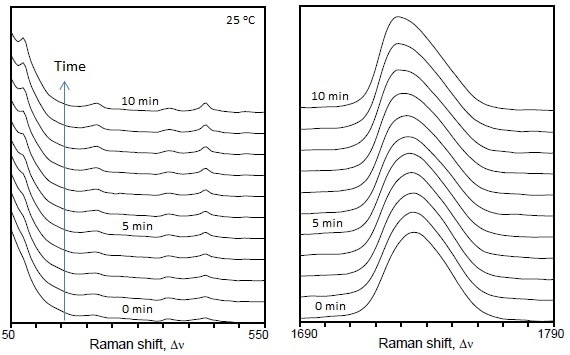
Figure 1. Time-dependent Raman spectra of Nodax™ PHBHx copolymer during the isothermal crystallization at 25 ºC comparing the low frequency THz region of Raman spectra (left) and C=O stretching region (right). Note the emergence of a low-frequency peak as time lapses and crystallinity increases.
The Coherent THz-Raman® Solution
This article discusses the use of THz-Raman® solution to study Nodax™ (introduced by MHG, Inc), a novel bio-based plastic, that is fully biodegradable. The sample was heated above the melt temperature, pressed, quenched and brought to the crystallization temperature of 25 ºC. The time-dependent Raman spectra of this isothermal crystallization process in the first 10 minutes after achieving the crystallization temperature are shown in Figure 1.
As the crystallization of the polymer proceeds, gradual changes in the spectral features indicate an increase in crystalline content and a reduction in amorphous component. By using the generalized 2D correlation method, visualization of the kinetics of crystallization can be effectively analyzed.
Shown in Figure 2 is the asynchronous 2D correlation spectra in which a positive cross peak (unshaded) shows that the spectral intensity change at Raman shift Dn1 occurs predominantly before that observed at Dn2, while a negative peak (shaded blue) indicates the opposite. It was observed that early crystallite nucleation (1734 cm-1) occurs first, followed by the primary growth of well-ordered crystals (1725 cm-1) of the polymer.
Secondary crystal growth (1730 cm-1) occurs at a later stage accompanied by a reduction of the amorphous component (1735-1750 cm-1), which takes place most dominantly during the primary crystal growth. The 2D correlation spectrum of the low frequency lattice modes, clearly detects the vibration between helices around 72 cm-1, the known vibrational modes of 21 helical structures at 80 and 96 cm-1, and the extensive amorphous contributions stretching below 66 cm-1.
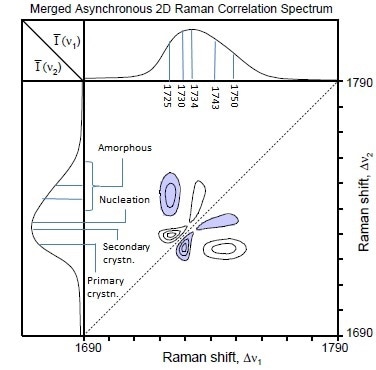
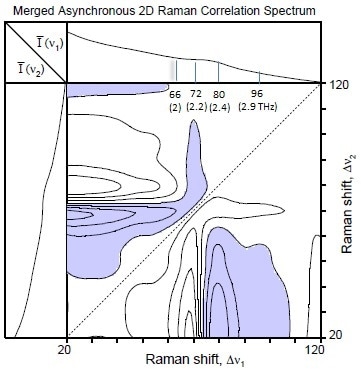
Figure 2. Merged asynchronous 2D correlation spectrum of the time-dependent THz-Raman® spectra showing the C=O stretching (top) and lattice modes (bottom).
Crucial Complementary Information
The Coherent THz-Raman® system allows collection of both the C=O stretch and lattice modes at the same time; therefore, crystallization kinetics can be compared with the corresponding lattice modes in order to learn the role played by lattice form in the crystallization process. Figure 3 shows the combined asynchronous 2D correlation spectrum of these two regions and reveals the development of a fully formed lamellar structure consisting of the 21 helices occurring after the primary growth of crystals.
This shows that internal restructuring within the lamellae is needed for the coordinated vibration of fully formed helices to start. The later stage secondary crystallization, which is considered to occur inside the confined inter-lamellar space, takes place after the full formation of packed helices comprising of the lamellae is complete. Using the complete Raman spectrum can offer a much deeper understanding of crystallization kinetics.
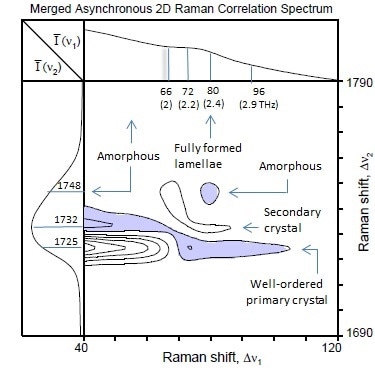
Figure 3. Hetero-mode 2D correlation between the C=O stretching region and the low frequency THz region of Raman spectra obtained simultaneously.
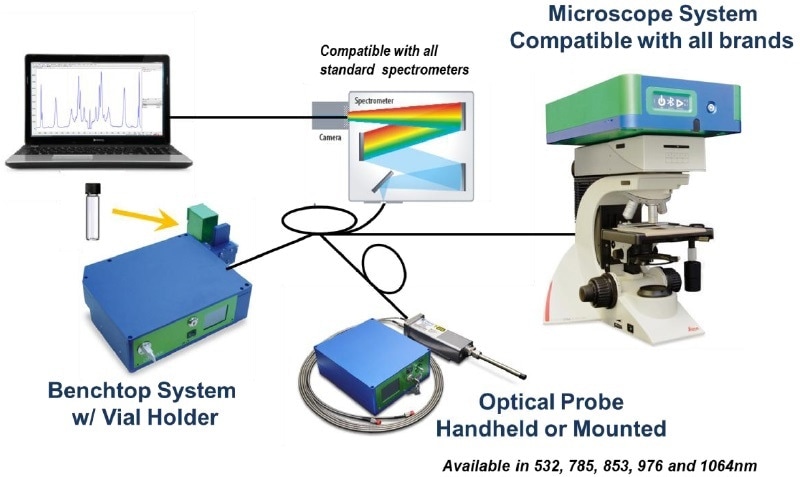
Conclusion
Coherent’s patented THz-Raman® spectroscopy systems have extended the range of conventional Raman spectroscopy into the THz/low-frequency regime. As a result, simultaneous analysis of both chemical composition and molecular structure for sophisticated materials characterization can be achieved. All THz-Raman® systems are robust, compact and plug-and-play platforms that offer extraordinary speed, throughput and ease of use, all at a very affordable price.
With a broad range of sample interfaces, wide selection of excitation wavelengths from 488 nm to 1064 nm, and optional polarization control, there is a THz-Raman® solution that can be effectively used for any application.

This information has been sourced, reviewed and adapted from materials provided by Coherent.
For more information on this source, please visit Coherent.